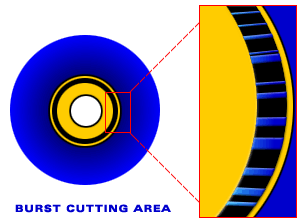| Columbia | |
| ISA |
| Home Glossary HDTV |
| Introduction | Links | Formats | Features |
| l | l | Media | Models |
DVD
DVD specifications can be obtained from the DVD Forum. The DVD technical specifications
are contained in five books A to E published by the DVD Forum.
The table below summarizes the physical parameters of DVD and compares them with those of CD and CD-ROM.
The data on a DVD disc are organized as sectors of 2048 bytes plus 12 bytes of header data.
The header contains the following information:
Blocks of 16 sectors are error protected using RSPC (Reed Solomon Product Code), which is block oriented and is more suitable for re-writable discs (with packet writing) than CIRC which does not use a block format. The PI and PO data are parity bytes calculated horizontally and vertically over the data bytes. In addition DVD uses an 8 to 16 modulation scheme giving pit lengths of 3 to 14 (minimum to maximum length) compared with CD's 3 to 11 with EFM modulation. Burst Cutting AreaThe Burst Cutting Area (BCA) is an annular area within the disc hub where a bar code can be written for additional information such as serial numbers. The BCA can be written during mastering and will be common for all discs from that master or, more usually, will be written using a YAG laser to 'cut' the barcode into the aluminum reflective layer of the finished disc. The data stored in the BCA can be from 12 bytes to 188 bytes in steps of 16 bytes. The Divx format used BCA to uniquely identify every disc. BCA can be used as a unique, tamper-proof means of identifying individual discs.
|
|
|
|||||||||||||||||||||||||||||||||||||||||||||||||||||||||||||||||||||||||||||||||||||||||||||||||||||||||||||||||||||||||||||||||||
Learn about the various video formats:
Video formats
Learn about DVD features:
features
Empowering consumers thru information.
Information offered only for purposes of education and research.
Contact: [email protected]
